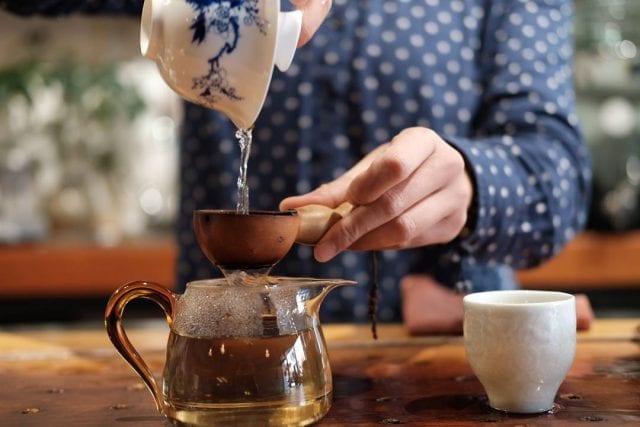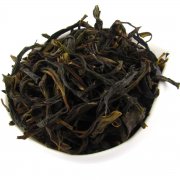Brewing methods and skills of Phoenix Dancong Oolong Tea share the best water temperature time for brewing Dancong
If you are not familiar with tea, you will be surprised at the difference in water temperature when making tea. When you use the right water temperature, it can open a world that you never knew existed in the taste of tea. Each type of tea has an ideal temperature range for brewing tea, because the wrong water temperature can lead to excessive or insufficient extraction of polyphenols (tannins), thus changing the taste of the tea. Although the temperature of many water is below 212 degrees Fahrenheit (the boiling point of water), ideally you will boil the water and cool it to the desired level. This concept is linked back to the Tang Dynasty (AD 618-906), known as kai boiled water or "boiled water." A variety of methods can be used to achieve the desired temperature. When making tea, it is a good choice to add a little spring water to the boiling water or pour the boiling water into the cooling bowl. You can use Tea Sea (shared kettle) or cooling bowl (yuzamashi) to distribute your cold water or dance between two containers to cool water. This not only makes the water most suitable for making tea, but if you are using treated municipal water, it can also help eliminate the taste and smell of chlorine. Water temperature green tea: Japan (or other steamed hot tea): 140-185 degrees Fahrenheit Chinese tea (or other dry hot tea): 160-185 degrees Fahrenheit yellow tea: 165-180 °F white tea: 170-185 degrees Fahrenheit oolong tea: 185-195 °F black tea: 180-200 °F black tea: 200 °F when you use too hot water, we usually call it "boiled tea". "Hot tea" means that excessive polyphenols (tannins) are leached from hot water, making the tea astringent. This changed taste prevents the tea from giving out its potential delicacy! Especially white tea and green tea. If the water is too cold, the polyphenols (tannins) in the tea will not be extracted enough, and your tea will lose the complete taste and characteristics that it was supposed to create. It is important to note that most plant teas are not "charred" because they do not contain tannins or other elements, which affect the taste when extracted in hot water. In addition, many plant extracts need as hot water as possible to fully extract the best flavor and color.

When brewing tea, the change of water temperature is directly related to the processing method of tea. What do you mean by "treatment"? When making dry tea from fresh tea, it can lead to different flavors through countless steps, which directly determines the category of the final product. Tea trees are divided into six categories: green tea, yellow tea, white tea, oolong tea, black tea and black tea. The steps for creating categories can include dry heat, steam heat, rolling, scratches, and more. These techniques determine the amount of oxidation in leaves. Oxidation is a natural enzymatic reaction similar to the browning of sliced apples or freshly chopped basil leaves. For tea, it is the biochemical process that changes freshly picked tea from green to yellow, from amber to red, and finally to brown. Heating stops the oxidation process. Although oxidation is not ideal in cooking, controlling the amount of oxidation is an important goal of tea processing. Tea tannins are changed when the percentage of tea oxidation is manipulated. Tannins, also known as antioxidants or polyphenols, are secondary plant metabolites. Usually, plants produce secondary metabolites to protect against ultraviolet radiation or pathogens. Recent epidemiological studies have shown that the intake of polyphenols can be beneficial to human health in many ways. Here we have a horizontal profile of polyphenols and a typical representation of these structures in tea. The tea polyphenols shown in the picture include: fresh tea polyphenols, theaflavins, thearubin and lycopene. From the spectrum, the darker the color, the higher the content of polyphenols. Each type of polyphenol is touted with different benefits, so it is assumed that people can choose a tea that is more likely to be good for health. No. 1 and No. 2 brewing tea Darjeeling Tea is an excellent example of polyphenols in black tea. Darjeeling Tea, the first red tea, is the main example of theaflavins in black tea. Theaflavins are a kind of polyphenols found in less oxidized tea. The second flat tea shows that black tea contains lycopene, which can be found in many types of tea. Polyphenols change taste and taste. The structure of tea polyphenols also determines which water temperature is suitable for tea during brewing.
Important Notice :
前街咖啡 FrontStreet Coffee has moved to new addredd:
FrontStreet Coffee Address: 315,Donghua East Road,GuangZhou
Tel:020 38364473
- Prev

Harmay Beauty Shop there are several shops in China that sell good coffee in Shanghai? excuse me, how does lemon tea taste?
Another brand of cross-border coffee. On September 30th, HARMAY, a high-end beauty makeup collection store made in China, opened a large flagship store. The flagship store is located on Wukang Road in Shanghai, across the street from the first store on the "Harmay Plum" Anfu Road in 2017. This shop has four floors and total noodles.
- Next

What is Phoenix Dancong tea? How does Chaoshan Phoenix single fir brew to taste good? Essentials of tea-making skills
Phoenix Dancong belongs to the top famous oolong tea, which is mainly produced on the southeast slope of Fenghuang Mountain, which is known as the roof of Chaoshan, and is distributed in the northeast of Chaozhou, such as Wudao Mountain, Wuyushan Mountain, Zhugan Mountain, Dazishan, Wanfengshan, Shuangyaoshan and so on. Cages of trees in the mountains, gurgling streams, misty clouds all the year round, Rain Water
Related
- The milk tea cup becomes smaller?! Overlord Tea Girl launches a new "Return to Yunnan" series
- Accused of selling counterfeit and high-priced coffee beans! Well-known boutique coffee brand "Oukelao" bowed and apologized!
- How to make espresso dumplings? Can I eat coffee and glutinous rice balls together?
- Save the unformed and stagnant powder cakes in one second! What is the problem with stagnant water in the powder bowl of the espresso machine?
- What does hand-brewed coffee stop mean? Why is it not recommended to make coffee by hand?
- Is it normal to smell like coffee? Why does coffee smell like alcohol? What's wrong with the strong smell of cold extract ice dripping ice brewed coffee?
- How to solve the problem that hand-brewed coffee extraction takes too long? Why is the water flowing so slowly when making coffee?
- The main points of making Australian white coffee, the proportion details, how does Australian white properly foam and blend the flowers?
- Can ice water make cold extract coffee? What is the difference between room temperature water and ice water for making cold coffee?
- What milk is best for making latte and white Dirty coffee? What is the difference between different brands of fresh milk and pure milk for making coffee?

